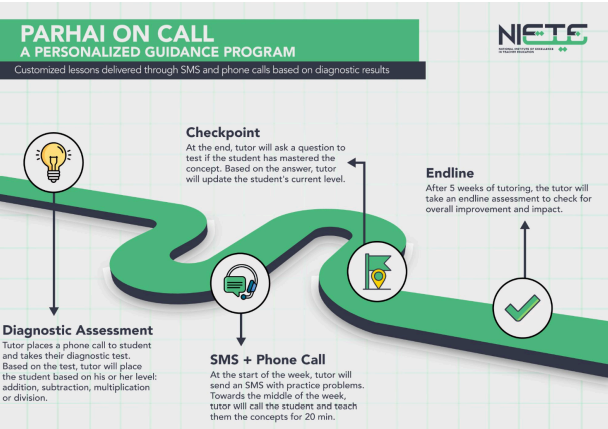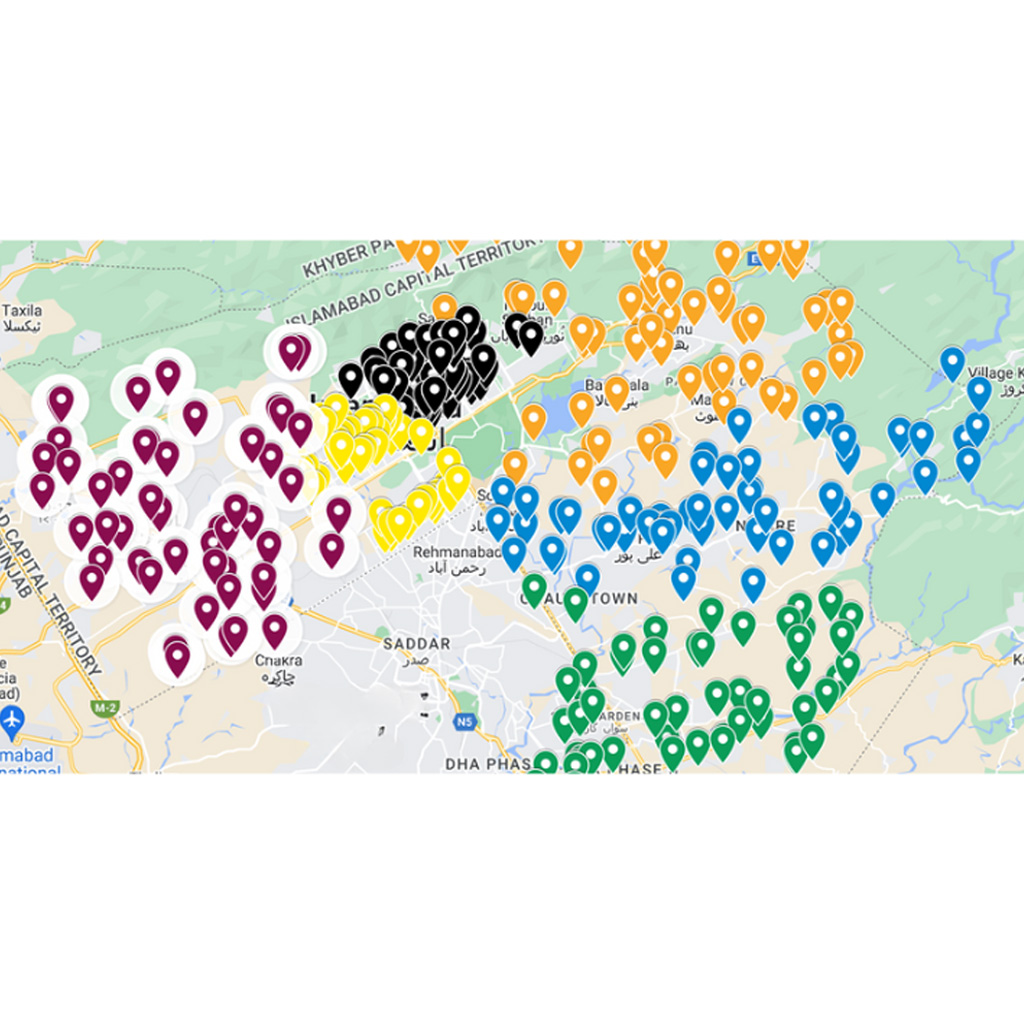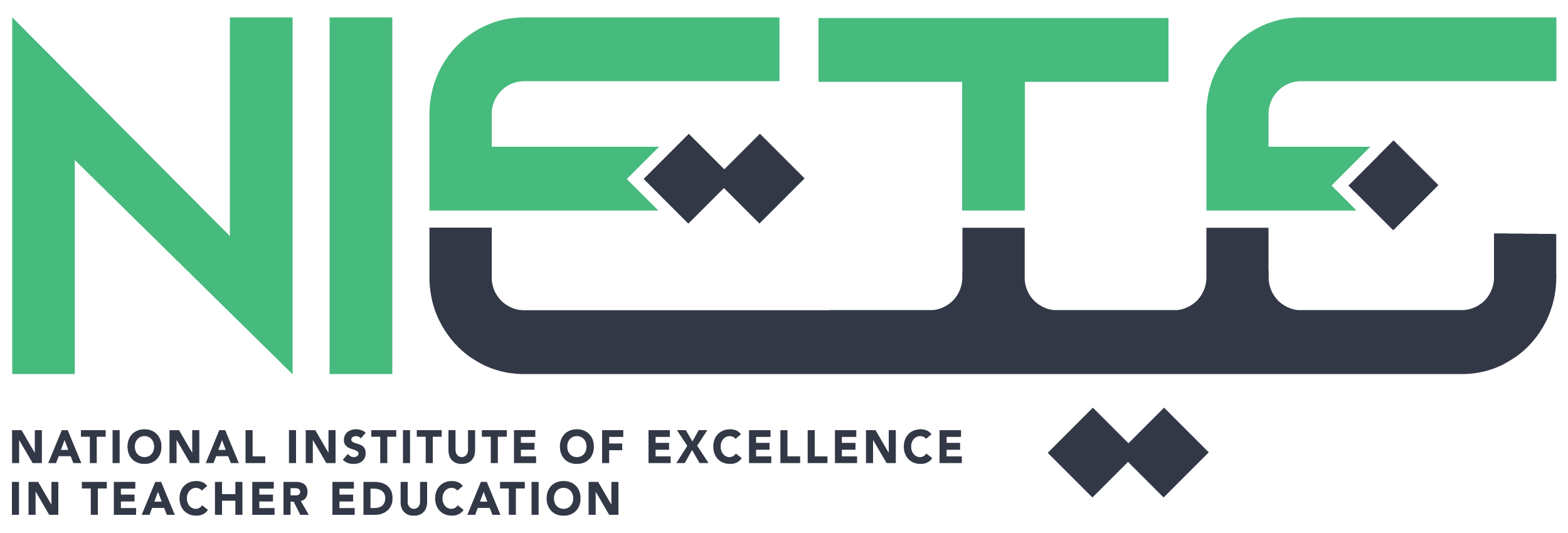In June 2024, after the start the start of summer vacations in ICT schools, we started the targeted instruction program with around 1500 students based on ConnectEd research. The research reports impressive impact gains up to 0.89 SD through phone tutoring. Here are the results of the original study. The graph is taken from the ConnectEd website. The program is targeting Grades 3, 4 and 5 and the focus is on the four operations in numeracy: addition, subtraction, multiplication and division. Monthly Newsletter 9 May 2024 National Institute of Excellence in Teacher Education

NGO and Government phone tutors similarly improved mathematics learning substantially (Average of Nepal and Philippines)
No Data Found
Student Participation Funnel
No Data Found
Internet Access Percentage Sector Wise
No Data Found
Regional Analysis
The graph above illustrates out of every 100 students contacted 44 calls were successful, 30 parents showed willingness to participate in the program and out of those 15 participated in the diagnostic assessments. We reached almost 120 schools and more than 14000 parents. Currently, we have a total of 1300 students in the treatment group. The challenge is in retaining students for the whole program. But we estimate that after the first tutoring call the curve will plateau.
We also got some interesting stats on the internet access in Islamabad which is relatively high than the national average. On average, almost 55% of parents have access to internet with urban regions in the lead. The national average is 46%. This helps us in determining the type of learning intervention that we can deploy for at-home learning.
Reasons for not Enrolling
No Data Found
Among parents who didn’t enroll for the program, many students were already taking tuitions, some were out of station during summers and some didn’t believe in online tutoring.
Diagnostic Results
No Data Found
Region-wise diagnostic results illustrates that urban regions are performing relatively better compared to rural regions. Percentage of students who cannot perform any operation is higher than students who can master all four operations.
Students enrolled in Tuitions
No Data Found
Among students who enrolled in the
program, almost 40% are already taking
tuition. This shows that the appetite for
after school tuitions is relatively high.
Among the regions, Nilore which falls into rural category, tops the list, with almost 50% of students enrolled in tuitions.
Grade-level Analysis
No Data Found
On average, almost 50% of Grade 3 students cannot do any arithmetic operation. Some students didn’t even understand the concept of place values. The number decreases as you move up the grade. 34% of students in Grade 4 and 18% students in Grade 5 couldn’t do a single operation.
Numeracy Forecast
No Data Found
After 6 weeks of tutoring, it is projected that roughly the numbers will increase up to 20% . This approximation is based on the original ConnectEd study. Another assumption is that Barakahu and Nilore regions will experience relatively better results since the baseline is quite low.
Six Zones of Islamabad!
Islamabad Capital Territory is divided into six zones. 2 zones are in Urban regions while 4 fall under rural. This exercise helped us in understanding the context of each region which led us to do a deeper analysis and what affects the student learning outcomes.

Number of Students in a Classroom
No Data Found
The graph represents an alarming situation in certain schools where number of students exceed 100 in a single classroom in Tarnol and Nilore. All zones have some classes where highest number of students exceed 60. This has huge implication on effectiveness of any teaching intervention and eventually student learning outcomes.
Rural Regions
Rural regions are divided into four zones: Nilore, Sihala, Barakahu and Tarnol. Barakahu which means 12 Rosewood trees lies in the intersection of Punjab and KP and boosts a diverse communities of residents hailing from all regions of Pakistan.
The area has 68 public schools and a host of private schools including elite schools like Head Start and Edopia. The region is represented through orange pins on the map. Nilore region, represented through blue pins 58 schools and 551 teachers.
Next to Nilore, further South is the Sihala region. Silaha has 67 schools and 594 teachers. The area features gated communities like DHA and Doctor’s Colony. Tarnol is situated towards the West of Margalla Hills and has 54 schools and 580 teachers. The area features some of the new sectors and towns of ICT towards the new airport.
Urban Zones
Urban 1 & 2 schools lie in Islamabad’s elite sectors. Urban 1 has 48 schools and 927 teachers while Urban 2 has 47 schools and 809 teachers. Most of the parents in this area are workers, shopkeepers, and house helpers. Almost 50% of students in this region are enrolled in after-school tuition. The teachers are well-educated and have their children studying in private institutes. In the map, Urban 1 schools are represented through black pins and Urban 2 through yellow pins.
Teacher - School Ratio
No Data Found
The graph above shows that teacher to school ratio is high in Urban zones and low in rural zones which can explain the difference in learning outcomes.
Impact Data - ASER Baseline
- Purpose: The primary purpose of the baseline sampling was to evaluate the impact of the NIETE
program on student learning outcomes. - Sample Size: Initially, the plan was to collect data from children across 30 selected schools. However,
due to time constraints, data was successfully collected from 26 schools, encompassing a total of 268
children. - Target Group: The data collection specifically focused on 3rd-grade students to assess their learning
progress and challenges. - Testing Method: The ASER (Annual Status of Education Report) test was utilized as the primary method
for assessing the students’ learning outcomes.
Percentage of Students who are able to read English words
No Data Found
The graph above highlights the percentage of students who can read up to 5 words in English. Urban zones are taking the lead while students in rural zones are lagging behind. The gap between rural and urban is almost 30%.
Percentage of Students who are able to read Urdu sentences
No Data Found
The graph above highlights the percentage of students who can read up to 4 sentences in Urdu. Urban 2 2 is in the lead with over 80% students meeting with benchmarks. Less than 50% of students in all other zones are able to read sentences in Urdu.

